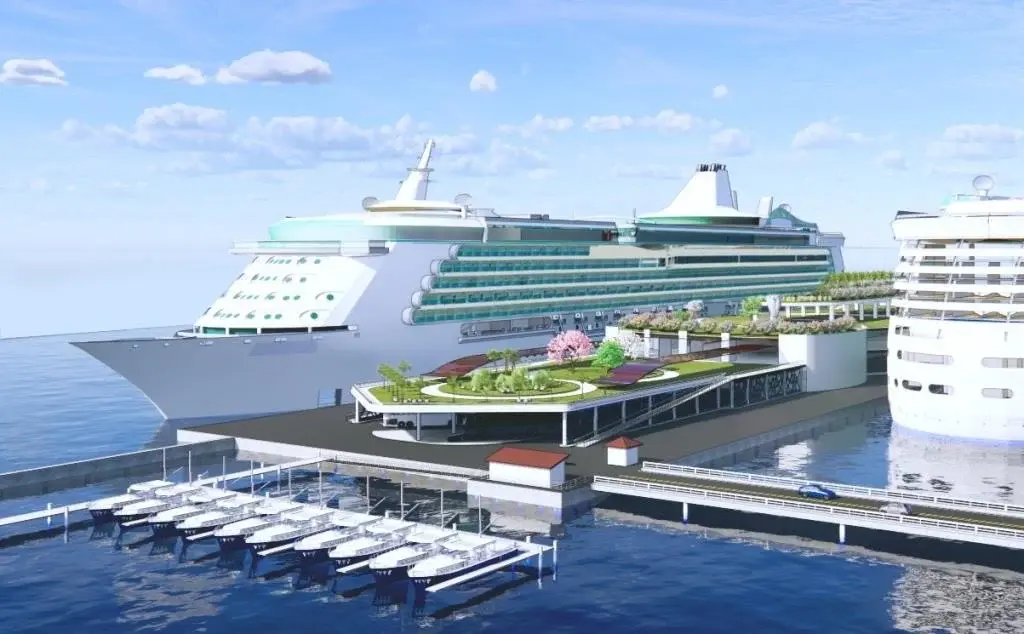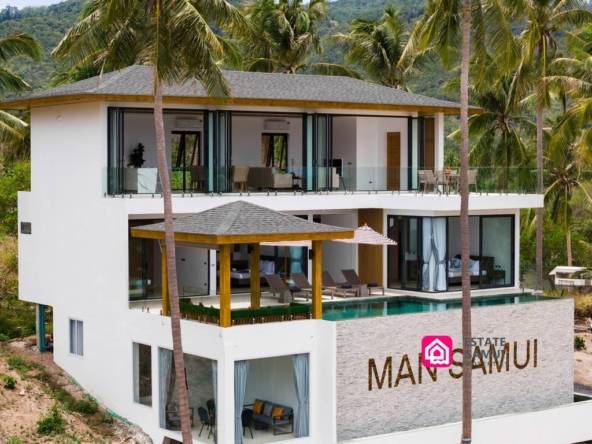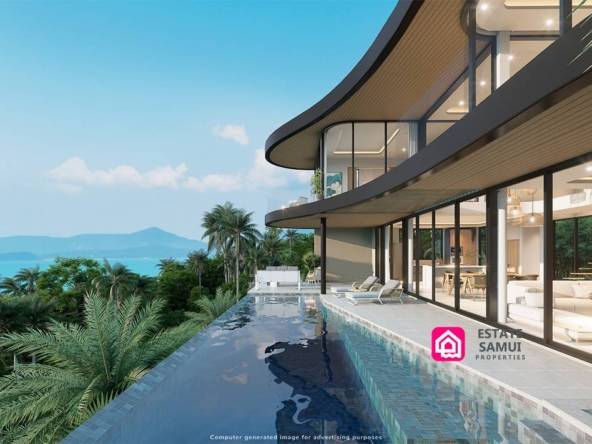Koh Samui, renowned for its pristine beaches and cultural richness, is set to elevate its standing in global tourism with the construction of the Koh Samui cruise terminal. This significant project, scheduled for completion by 2032, will transform the island into a key player in the international cruise industry. The terminal is expected to enhance Koh Samui’s tourism infrastructure and stimulate its economy by attracting thousands of cruise passengers each year.
Project Overview
The Koh Samui cruise terminal will be located in Laem Hin Khom, situated on the island’s southwestern coast, in Taling Ngam. Chosen for its ideal deep-sea conditions and natural wind protection, this location is perfect for accommodating large cruise ships. The terminal will span 47 rai (approximately 18.5 acres) and cost 12.1 billion baht to construct. This ambitious development is expected to handle around 120 cruise ship arrivals annually, with a projected 180,000 passengers visiting the island each year.
The partnership between the Thai government and private investors aims to make Koh Samui a leading destination for international cruises. The influx of cruise visitors will benefit the local economy by boosting industries such as hospitality, transportation, and retail. As the Koh Samui cruise terminal becomes operational, local businesses will see increased demand for services such as accommodations, dining, and excursions.
Please note that the conceptual graphic shown above is an AI generated concept.
Economic Impact and Benefits
The Koh Samui bridge is being designed with a focus on minimizing its environmental impact. The structure will be a combination of cable-stayed and beam bridge designs, allowing large vessels to pass underneath without obstructing maritime traffic. With plans to withstand strong winds, earthquakes, and possible collisions, the bridge ensures both environmental protection and structural safety
Why Build a Koh Samui Bridge to the Mainland?
The Koh Samui cruise terminal project aligns with Thailand’s strategy to bolster tourism, particularly in the Surat Thani province, where Koh Samui is located. This initiative follows efforts to recover from the economic challenges posed by the global pandemic. As tourism plays a critical role in the Thai economy, Koh Samui, with its expanding infrastructure, is pivotal in achieving this goal.
Financed through a Public-Private Partnership (PPP), the Koh Samui cruise terminal is expected to generate an economic benefit of 46 billion baht over 37 years. The project’s estimated internal rate of return (EIRR) exceeds 15%, making it an appealing opportunity for public and private stakeholders alike. This new development will not only bolster the tourism sector but also create job opportunities and improve local livelihoods.
Construction Timeline
The construction of the Koh Samui cruise terminal is set to begin in 2029, with full operations expected by 2032. A comprehensive study conducted by the Marine Department has already assessed the project’s feasibility, focusing on key aspects such as emergency response capabilities and public utility integration. The government has confirmed that the project is awaiting final Cabinet approval, after which the bidding process will commence. Investors from around the globe are showing strong interest in this promising project.
Boost to Tourism and Accessibility
Currently, Koh Samui’s infrastructure limits its ability to accommodate large cruise ships. Most ships visiting the island must anchor offshore, with passengers ferried to land in smaller vessels. This process restricts the number of cruise passengers and the types of ships that can dock. The Koh Samui cruise terminal will resolve this by allowing direct docking, making the island more accessible for large vessels.
The new terminal will offer smoother transitions from ship to shore, enhancing the overall experience for cruise passengers. This improved accessibility will also make Koh Samui more attractive to major cruise lines. The terminal will accommodate a diverse range of ships, from luxury vessels to larger, mass-market liners, ensuring that Koh Samui can host a variety of tourists.
Environmental and Commercial Considerations
Environmental sustainability is a core focus of the Koh Samui cruise terminal project. Its developers have taken care to ensure that the terminal’s construction and operations do not harm the surrounding marine ecosystems and natural reserves. The Marine Department’s study includes detailed plans for minimizing environmental impact, especially regarding emergency response measures and utility readiness.
In addition to environmental considerations, the terminal will likely spur commercial development in the surrounding areas. Local businesses are expected to thrive, with new opportunities arising from the influx of cruise passengers. Hotels, restaurants, and excursion services are expected to see a surge in demand, creating a vibrant tourism economy not only in Koh Samui but also across the Surat Thani province.
Conclusion
The development of the Koh Samui cruise terminal is a major step forward for Thailand’s tourism industry. By 2032, Koh Samui will be ready to welcome an influx of international cruise visitors, creating new opportunities for economic growth and reinforcing its position as a top travel destination in Southeast Asia. As the terminal approaches its completion, the local community and the broader tourism sector can anticipate significant benefits, both in the short and long term.
This project marks Koh Samui’s transition from a vacation hotspot to a central hub in the global cruise network, offering a glimpse of the island’s bright future as a world-class tourism destination.




